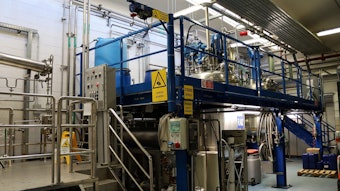Beauty brand owners function in a high-pressure environment that emphasizes the here-and-now. Systems and structures are seen as important in some contexts— for example to identify and resolve quality control problems. But the industry’s logistics parameters in today’s global sourcing supply chain often are not viewed with the same structured perspective. Getting the latest urgent shipment in on time is what matters.
This fits today’s emerging supply chain paradigm for all industries, which has changed from emphasizing cost alone to emphasizing service and reliability as cost drivers. Complete and timely delivery is a critical measurement of service and reliability, and this is synonymous with the integrated transportation management systems used to coordinate every phase of the process—from contractual activity, to delivery and cost finalizations. The goal is to eliminate the guesswork, backtracking and delays that waste time. With a focus on measuring and achieving on-time delivery, all other key performance indicator (KPI) measurements fall into place.
Measurable Standards
There are numerous KPIs to measure logistics performance. However, just-in-time shipping requirements and expense from wasted fuel and delayed customs or security clearance make on-time delivery KPI number one. Complete and timely delivery is synonymous with planning and preparation. When planning is incomplete, the resulting inadequate information flow and poor organization will create preventable and costly problems when it comes to measurable efficiency in global sourcing.
Establishing measurable standards and aligning them to the cosmetics shipper’s requirements is a step-by-step process that should mean supply chain management with capabilities to:
- Provides upstream control of ASNs (advance shipment notifications);
- Receive, verify and transfer product;
- Manage inventory and import/export requirements;
- Process customer inquiries, select carriers and route shipments;
- Identify all customs and security regimes that apply to the shipment;
- Undertake warehouse and inventory management;
- Schedule deliveries.
Putting such a detailed process in place is the foundation for efficient supply-chain. The use of such best practices in supply, scheduling, transportation, stocking and quality enables brand owners and shippers to build a common framework for understanding what is expected of them, and makes such issues as cross-border tariffs, taxes, regulatory and licensing requirements easier to deal with. When combined with effective use of International Commercial Terms (Incoterms) and modern electronic tracking systems, the entire process creates predictability and consistency.
Essential Tool
Information technology with trace-back capability is the essential performance measurement tool in the supply chain infrastructure. Such computerized tracking and reporting must give businesses along the supply chain a common platform for information exchange to capture, retrieve and report on shipment information and history at any stage. Furthermore, the system must be designed for flexibility, taking into consideration the highly varied documentation and quality requirements of multiple customs regimes and related national security concerns. Using electronic tracking systems is the comprehensive measurement standard at every supply chain link. It can save enormous amounts of time, energy, and resources and eliminate the high, hidden cost of supply chain inefficiency in load aggregation, route planning and fuel consumption.
From door-to-door service backed by visibility to critical KPI’s as well as customs clearance, storage and distribution, to a straight one-off transactions, supply chain tracking systems should provide seamless integration of what a shipper's customers want in light of their business requirements. That’s why customized approaches are needed to meet the complex supply chain requirements of leading beauty companies. With global sales well on the way to $400 billion by 2015, beauty products present one of the most complex global freight challenges of any industry.
Measurement of successful performance requires more than general logistics or freight forwarding experience. It requires a supply chain management mentality with in-depth logistics and purchasing knowledge as it relates to the global beauty industry itself.
Industry Focus
Such an industry focus dramatically advances the performance paradigm and furthers a value proposition based on understanding freight requirements for beauty products. That involves specific levels of tailored, flexible service that can adapt as customer specifications evolve. The ultimate objective is efficiency: minimum downtime and as few obstacles to delivery as possible, complemented by maximum uptime as freight gets to where it needs to be. That is the ultimate performance measurement.
The use of the strategic management and measurement tools described here is the best way to make sure mission critical supply chain target measurements are met. Customs, security, technology and processing concerns all have been transformed in less than a decade. The beauty brand owner that is not transforming its logistics processes to meet these requirements, and consistently measuring how well it meets them, will have a dysfunctional sourcing and shipping effort that is a competitive disadvantage in the constantly changing global marketplace.
Simon Kaye is founder and CEO of Jaguar Freight Services, with operations and fully integrated door-to-door freight solution networks in Europe, North America, South America, Australasia, Asia, the Middle East and Africa. [email protected]; www.jaguarfreight.com; 1-516-239-1900










